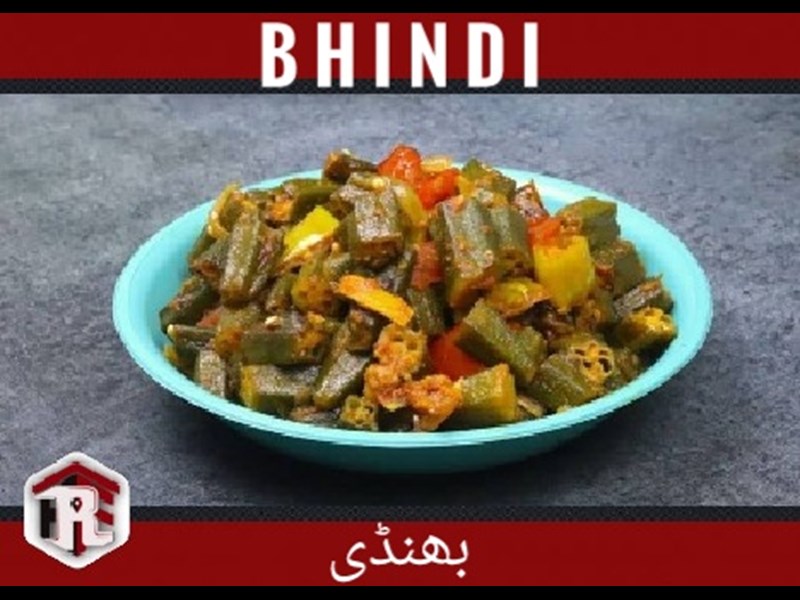Bhindi (Heritage Food)

Shan e Delhi recipe Kabita's Kitchen recipe Yasmin huma Kitchen recipe Nutrition
Bhindi
Lady Finger is a green vegetable that resembles a long finger with a little point at the tapering end. Its head has a protrusion that is generally removed as an inedible section since it is lighter green in color. Okra with a cross section cut reveals white-coloured spherical seeds that are evenly distributed throughout the vegetable. Bhindi is the name given to it in India. In other countries, it is commonly referred to as Okra. Internal stickiness is one of this vegetable's distinctive characteristics. The lady's finger can be chopped into circular pieces, divided into four half, or used whole in a mixed vegetable dish. The flavor is unique to the vegetable and is generally enjoyed by children.
Bhendi (Okra) is thought to have originated in modern-day Ethiopia, Eritrea's mountainous or plateau region, and the eastern, upper part of the Anglo-Egyptian Sudan. The routes and times by which okra was transported from Ethiopia to North Africa, the eastern Mediterranean, Arabia, and India are unknown. Even though it has been widely grown in Egypt for hundreds of years, no evidence of it has ever been discovered in any of Egypt's ancient monuments or antiquities.
Okra was presumably brought into Egypt by the Moslems from the East who conquered Egypt in the 7th century, because the Spanish Moors and Egyptians of the 12th and 13th centuries used an Arab word for it. Okra migrated from Arabia to North Africa, all the way around the Mediterranean, and eastward. The lack of any old Indian names for it shows that it arrived in India after the Christian Era began.
Ladyfingers, also known in the Haredi Jewish community as baby fingers due to modesty concerns are low density, dry, egg-based, sweet sponge cake biscuits roughly shaped like a large finger (sometimes known by the Italian name savoiardi or by the French name boudoirs. They're a key ingredient in a variety of desserts, including trifles and charlottes, as well as fruit or chocolate gateau linings and the sponge component of tiramisu. For the dessert tiramisu, they are usually soaked in a sugar syrup or liqueur, or in coffee or espresso. Plain ladyfingers are commonly given to infants because they are soft enough for teething mouths but firm enough not to hurt them. Bhindi is a member of the Moringaceae plant family, which is native to America Asia. During the Mughal dynasty in India, it was initially introduced. Because it includes iron, potassium, magnesium, copper, and manganese, the vegetable is beneficial to our health. It is stated that women who consume a lot of bhindi have lovely skin. Green bhindi (the most common kind), brown bhindi (which is somewhat larger than the green one), and red bhindis are among the many variations of bhindi available today, each with its own colour and shape (which have a pinkish color).
لیڈی فنگر/بھنڈی ایک ہری سبزی ہے جو لمبی انگلی سے مشابہت رکھتی ہے جس کے سرے پر ٹیپرنگ ہوتی ہے۔ اس کے سر ے میں ایک پھیلاؤ ہوتا ہے جسے عام طور پر طور پر ہٹا دیا جاتا ہے اور اس کا رنگ ہلکا سبز ہوتا ہے۔ اوکرا سفید رنگ کے کروی بیجوں کو ظاہر کرتا ہے جو سبزیوں میں یکساں طور پر تقسیم ہوتے ہیں۔ ہندوستان میں اسے بھنڈی کا نام دیا گیا ہے۔ دوسرے ممالک میں اسے عام طور پر اوکرا بھی کہا جاتا ہے۔ اندرونی چپچپا پن اس سبزی کی مخصوص خصوصیات میں سے ایک ہے۔ سبزی کا ایک منفرد ذائقہ ہے اور عام طور پر بچے اور بڑے اس سے لطف اندوز ہوتے ہیں۔
بھنڈی (اوکرا) کے بارے میں خیال کیا جاتا ہے کہ اس کی ابتدا جدید دور کے ایتھوپیا، اریٹیریا کے پہاڑی یا سطح مرتفع کے علاقے اور اینگلو-مصری سوڈان کے مشرقی، بالائی حصے میں ہوئی ہے۔ ایتھوپیا سے شمالی افریقہ، مشرقی بحیرہ روم، عرب اور ہندوستان تک جن راستوں اور اوقات کے ذریعے بھنڈی کو پہنچایا گیا وہ نامعلوم ہیں۔ اگرچہ یہ سینکڑوں سالوں سے مصر میں بڑے پیمانے پر اگایا جا رہا ہے، لیکن مصر کی کسی بھی قدیم یادگار یا نوادرات میں اس کا کوئی ثبوت نہیں ملا۔
اوکرا کو غالباً مشرق سے آنے والے مسلمانوں نے مصر میں لایا تھا جنہوں نے 7ویں صدی میں مصر کو فتح کیا تھا، کیونکہ 12ویں اور 13ویں صدی کے ہسپانوی موروں اور مصریوں نے اس کے لیے عربی لفظ استعمال کیا تھا۔ اوکرا عرب سے شمالی افریقہ، بحیرہ روم کے ارد گرد اور مشرق کی طرف ہجرت کر گیا۔ اس کے پرانے ہندوستانی ناموں کی کمی سے پتہ چلتا ہے کہ یہ ہندوستان میں عیسائی دور شروع ہونے کے بعد آیا۔
لیڈی فنگرز، جسے ہریدی یہودی کمیونٹی میں بچے کی انگلیوں کے نام سے بھی جانا جاتا ہے۔ سادہ لیڈی فنگرز عام طور پر نوزائیدہ بچوں کو دی جاتی ہیں کیونکہ وہ منہ میں دانت نکالنے کے لیے کافی نرم ہوتی ہیں ۔ بھارت میں اسے ابتدائی طور پر متعارف کرایا گیا تھا۔کیونکہ اس میں آئرن، پوٹاشیم، میگنیشیم، کاپر اور مینگنیج شامل ہیں، اس لیے یہ سبزی ہماری صحت کے لیے فائدہ مند ہے۔. ہری بھنڈی (سب سے عام قسم)، بھوری بھنڈی (جو سبز سے کچھ بڑی ہوتی ہے)، اور سرخ بھنڈی آج کل دستیاب بھنڈی کی بہت سی مختلف قسموں میں سے ہیں، ہر ایک کا اپنا رنگ اور شکل ہے ۔ یہ سبزی صحت کے لیے بہت اچھی ہے اور اسے ہر جگہ پسند کیا جا تا ہے۔